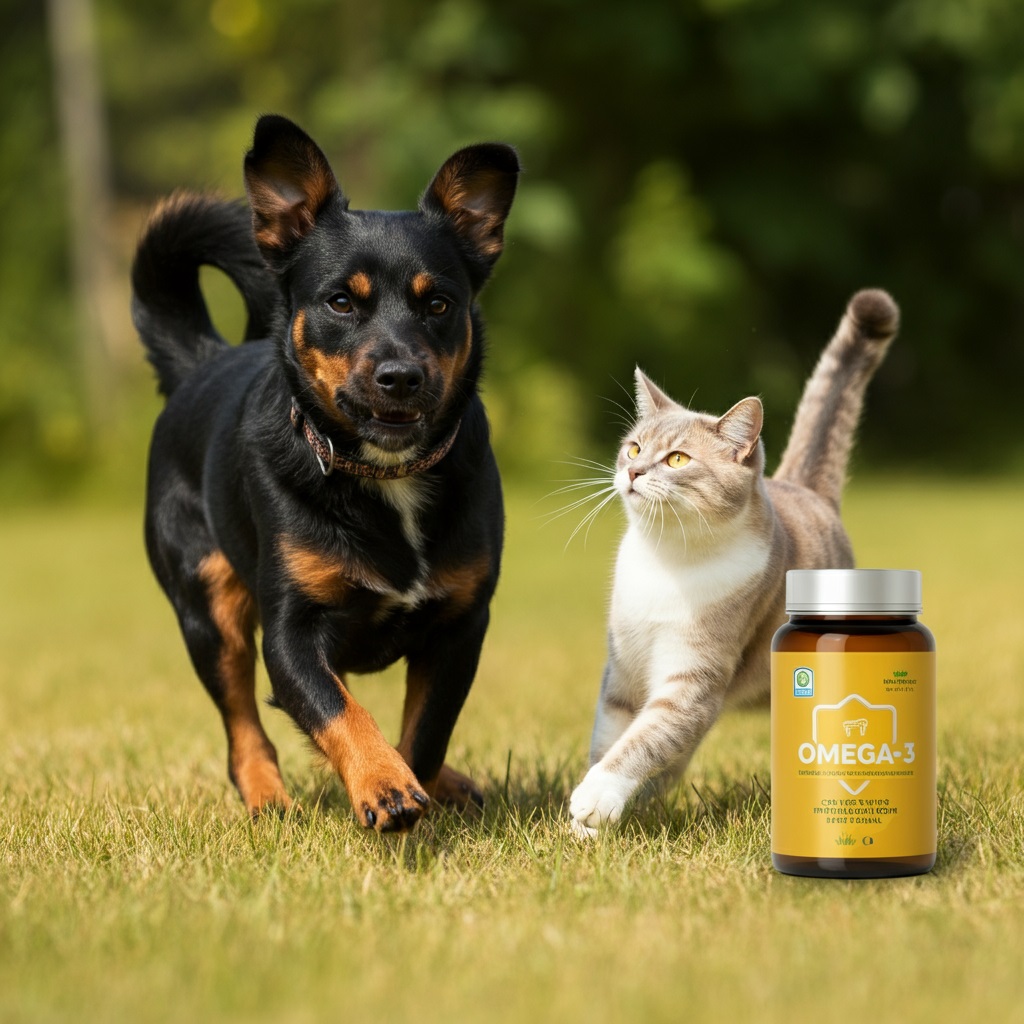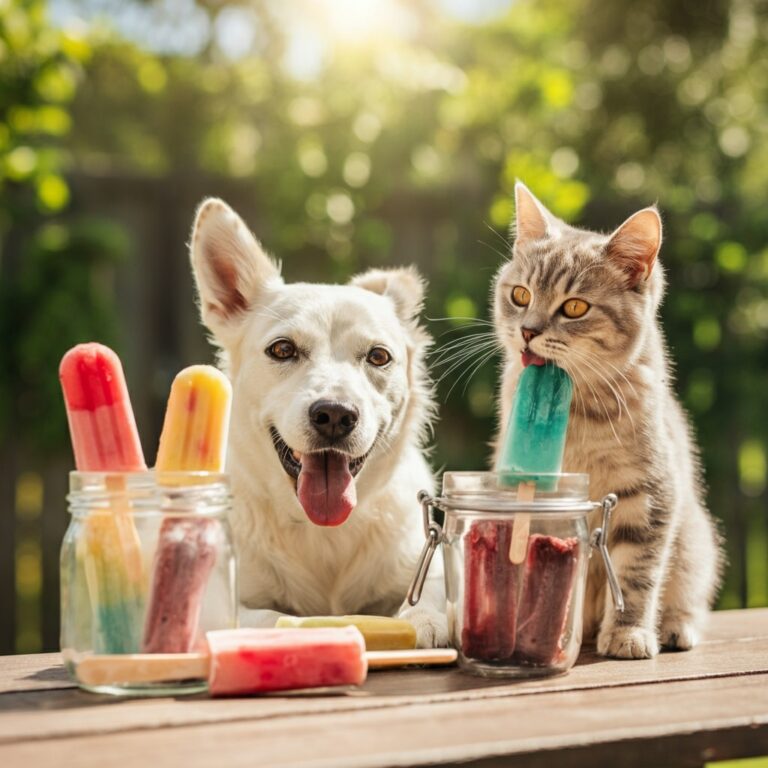
Your pet’s skin and coat serve as the first line of defense against environmental threats while reflecting their overall health status. When dogs and cats suffer from dull fur, excessive shedding, or irritated skin, the underlying cause often traces back to nutritional deficiencies—particularly insufficient omega-3 fatty acids.
Omega-3 fatty acids represent essential nutrients that pets cannot produce naturally in their bodies. These powerful compounds must come from dietary sources, yet many commercial pet foods fall short of providing adequate amounts. The consequences become visible through lackluster coats, persistent itching, and skin conditions that leave both pets and their owners frustrated.
Understanding how omega-3s function within your pet’s system can transform their appearance and comfort level. These fatty acids work at the cellular level to support skin barrier function, reduce inflammation, and promote the growth of healthy hair follicles. The result extends beyond mere aesthetics—pets with optimal omega-3 intake experience fewer skin allergies, reduced scratching, and improved overall well-being.
The science behind omega-3s reveals why these nutrients deserve special attention in pet nutrition. Unlike other fatty acids, omega-3s possess unique anti-inflammatory properties that directly impact skin health. They help maintain the skin’s natural moisture barrier, preventing dryness and irritation while supporting the immune system’s response to allergens and environmental stressors.
Understanding Omega-3 Fatty Acids and Their Types
Omega-3 fatty acids encompass a family of polyunsaturated fats, each offering distinct benefits for pet health. The three primary types—EPA (eicosapentaenoic acid), DHA (docosahexaenoic acid), and ALA (alpha-linolenic acid)—serve different functions within your pet’s body.
EPA stands out as the most potent anti-inflammatory omega-3, directly targeting skin inflammation and irritation. This fatty acid helps regulate the immune system’s response to allergens, reducing the severity of allergic reactions that manifest as skin problems. EPA also supports the production of compounds that promote healing and reduce redness in irritated skin areas.
DHA plays a crucial role in maintaining cell membrane integrity throughout the body, including skin cells. This omega-3 supports the skin’s barrier function, helping retain moisture and preventing harmful substances from penetrating the skin surface. DHA also contributes to healthy hair follicle development, promoting stronger, shinier coat growth.
ALA represents the plant-based omega-3 found in sources like flaxseed and chia seeds. While pets can convert small amounts of ALA into EPA and DHA, this conversion process proves highly inefficient in dogs and cats. Therefore, direct sources of EPA and DHA typically provide more significant benefits for skin and coat health.
How Omega-3s Support Skin Health
The skin’s barrier function depends heavily on adequate omega-3 fatty acid levels. These essential fats become incorporated into cell membranes throughout the skin, influencing membrane fluidity and permeability. When omega-3 levels remain optimal, skin cells maintain their structure and function more effectively.
Omega-3s help regulate sebum production, the natural oils that keep skin moisturized and protected. Balanced sebum production prevents both excessive oiliness and problematic dryness that can lead to flaking, itching, and bacterial overgrowth. This regulation proves particularly important for pets prone to seborrheic dermatitis or other oil-related skin conditions.
The anti-inflammatory properties of omega-3s directly combat the underlying causes of many skin problems. Chronic inflammation can damage skin cells, disrupt normal healing processes, and create conditions favorable for secondary infections. By reducing inflammatory responses, omega-3s help maintain healthy skin environments and support faster healing when injuries or irritations occur.
Omega-3 fatty acids also influence the production of important signaling molecules called eicosanoids. These compounds help coordinate immune responses and inflammatory processes throughout the body. The balance between omega-3 and omega-6 fatty acids determines whether these signaling molecules promote or resolve inflammation, making proper omega-3 intake crucial for skin health.
The Connection Between Omega-3s and Coat Quality
Healthy hair growth requires adequate nutrition at the follicle level, where omega-3 fatty acids play multiple essential roles. These nutrients support the cellular processes involved in hair production while improving blood circulation to hair follicles. Enhanced circulation ensures that follicles receive the oxygen and nutrients necessary for producing strong, healthy hair strands.
Omega-3s influence the hair growth cycle itself, potentially extending the anagen (growth) phase while shortening the telogen (resting) phase. This shift results in more active hair follicles producing new growth, leading to fuller, denser coats. The improved growth cycle also means that seasonal shedding occurs more evenly, reducing the dramatic coat loss that concerns many pet owners.
The structural integrity of individual hair strands benefits significantly from adequate omega-3 intake. These fatty acids become incorporated into the hair shaft during formation, contributing to flexibility and strength. Hair with sufficient omega-3 content resists breakage better and maintains its natural shine longer than nutrient-deficient hair.
Coat texture improvements become apparent within weeks of beginning omega-3 supplementation. Pet owners often report softer, more manageable fur that tangles less frequently. The enhanced moisture retention provided by omega-3s prevents the brittleness and static that characterize poorly nourished coats.
Common Signs of Omega-3 Deficiency in Pets
Recognizing omega-3 deficiency symptoms allows pet owners to address nutritional gaps before they lead to serious skin and coat problems. The earliest signs often appear subtle but become more pronounced as deficiency continues.
Dull, lackluster fur represents one of the most common indicators of insufficient omega-3 intake. Healthy coats should display natural shine and vitality, reflecting light evenly across the hair surface. When omega-3 levels drop, fur loses this luminous quality and appears flat or lifeless despite regular grooming.
Excessive shedding beyond normal seasonal patterns suggests possible omega-3 deficiency. While all pets shed regularly, deficient animals may lose hair continuously or in large amounts. The lost hair often appears weak or brittle, breaking easily when handled. This type of shedding differs from the healthy, cyclical hair loss that occurs naturally.
Skin irritation manifests in various ways among omega-3 deficient pets. Persistent scratching, particularly without visible parasites or obvious irritants, may indicate inflammatory skin conditions related to nutritional deficiency. Red, inflamed areas, especially around the ears, paws, and belly, commonly develop when omega-3 levels remain inadequate.
Continues after advertising
Dry, flaky skin represents another hallmark of omega-3 deficiency. The skin may appear tight or scaly, with visible flakes accumulating in the pet’s bedding or favorite resting spots. This dryness often accompanies increased sensitivity to environmental allergens and irritants.
Dietary Sources of Omega-3s for Pets
Marine-based omega-3 sources provide the most bioavailable forms of EPA and DHA for pets. Fish oil supplements specifically formulated for pets offer concentrated doses of these crucial fatty acids. High-quality fish oils undergo purification processes to remove contaminants while preserving beneficial compounds.
Whole fish incorporated into pet diets can provide excellent omega-3 content, though the levels vary significantly between species. Fatty fish like salmon, mackerel, sardines, and anchovies contain substantial amounts of EPA and DHA. However, preparation methods and storage conditions influence the final omega-3 content pets receive.
Krill oil presents an alternative marine source with unique advantages. The omega-3s in krill oil exist in phospholipid form, potentially improving absorption and utilization compared to traditional fish oils. Krill oil also contains astaxanthin, a powerful antioxidant that may provide additional skin protection benefits.
Plant-based omega-3 sources include flaxseed, chia seeds, and hemp seed oil. While these sources provide ALA omega-3s, pets convert only small percentages into the more beneficial EPA and DHA forms. Plant sources work best as supplements to marine-based omega-3s rather than primary sources.
Some commercial pet foods now include enhanced omega-3 content through fish meal, fish oil, or marine algae additions. However, processing methods and storage time can significantly reduce the bioavailability of these added omega-3s, making supplementation necessary for many pets.
Choosing the Right Omega-3 Supplement
Quality varies dramatically among omega-3 supplements available for pets. Third-party testing for purity and potency provides assurance that products contain advertised omega-3 levels without harmful contaminants. Look for supplements that display certificates of analysis or quality certifications from reputable organizations.
Concentration levels determine how much supplement pets need to receive therapeutic benefits. Higher concentration products require smaller doses, making administration easier while often providing better value. Check labels for specific EPA and DHA amounts rather than total omega-3 content, as these active compounds provide the primary benefits.
Formulation affects both stability and palatability of omega-3 supplements. Liquid oils offer flexibility in dosing but may oxidize more quickly than encapsulated forms. Soft gel capsules protect oils from light and air exposure while providing precise dosing. Some pets accept flavored liquid formulations more readily than capsules.
Storage requirements influence supplement effectiveness and safety. Omega-3 oils oxidize rapidly when exposed to heat, light, and air, producing rancid compounds that may harm pets. Refrigerated storage extends shelf life significantly, while dark containers protect against light damage.
Dosage Guidelines and Administration
Omega-3 dosage requirements vary based on pet size, age, and existing health conditions. Generally, dogs require approximately 20-55mg of combined EPA and DHA per pound of body weight daily for skin and coat benefits. Cats typically need lower doses due to their smaller size and different metabolism.
Starting with conservative doses allows pets to adjust gradually while monitoring for any adverse reactions. Begin with half the recommended dose for the first week, then increase to full dosage if no digestive upset occurs. Some pets experience loose stools initially when beginning omega-3 supplementation.
Administration timing can influence absorption and reduce potential side effects. Giving omega-3 supplements with meals improves absorption while reducing the likelihood of digestive upset. The fat content in regular food helps emulsify omega-3 oils, making them more bioavailable.
Consistency proves crucial for achieving optimal results from omega-3 supplementation. Irregular dosing prevents the accumulation of these fatty acids in cell membranes where they provide their benefits. Daily administration works better than intermittent large doses for maintaining steady omega-3 levels.
Monitoring Progress and Results
Visible improvements in skin and coat condition typically become apparent within 6-8 weeks of consistent omega-3 supplementation. However, some pets may show initial changes within 2-4 weeks, while others require 12 weeks or longer to display significant improvements.
Coat changes usually appear first, with increased shine and softness becoming noticeable before texture improvements. Reduced shedding may take longer to observe, as existing hair must cycle through natural growth phases before omega-3 benefits become fully apparent.
Skin improvements often begin with reduced itching and scratching behaviors. Pet owners may notice their animals spending less time grooming excessively or scratching at irritated areas. Visible skin inflammation typically decreases gradually over several weeks of supplementation.
Documenting progress through photographs can help track subtle changes that might otherwise go unnoticed. Take pictures of problem areas before beginning supplementation, then compare with images taken at regular intervals during treatment.
Read More👉 How to Calm a Dog During Fireworks or Storms
Transform Your Pet’s Health Through Proper Nutrition
Omega-3 fatty acids represent one of the most powerful nutritional tools available for improving pet skin and coat health. These essential nutrients address the root causes of many common skin problems while promoting vibrant, healthy fur growth. The investment in quality omega-3 supplementation pays dividends through reduced veterinary visits, improved pet comfort, and enhanced quality of life.
Success requires commitment to consistent supplementation and patience while allowing time for results to develop. Work with your veterinarian to develop an appropriate omega-3 strategy tailored to your pet’s specific needs and health status. Regular monitoring ensures that supplementation provides maximum benefits while maintaining safety.
The transformation possible through proper omega-3 nutrition extends beyond mere appearance improvements. Pets with healthy skin and coats experience greater comfort, reduced allergy symptoms, and stronger immune function. These benefits create a positive cycle where improved nutrition supports overall health, leading to even better responses to omega-3 supplementation.
Consider omega-3 supplementation as an investment in your pet’s long-term health and happiness. The relatively simple step of adding these essential fatty acids to your pet’s daily routine can prevent numerous skin and coat problems while enhancing their natural beauty and vitality.






